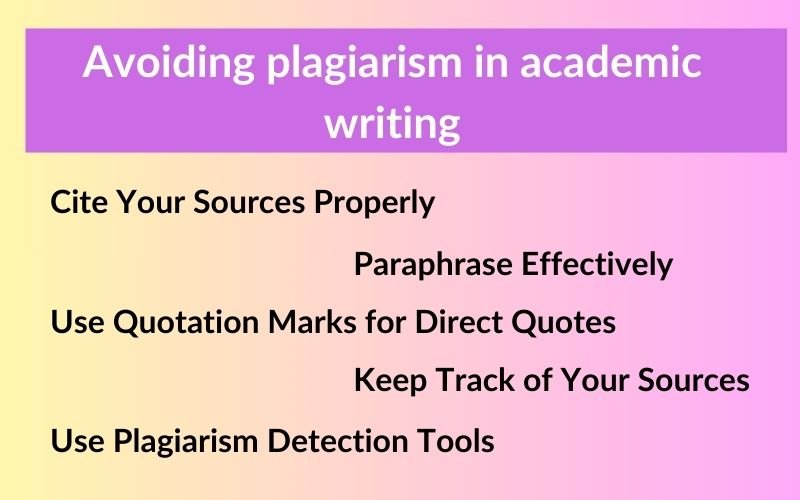Avoiding plagiarism in academic writing is crucial for maintaining integrity and credibility. Here are some effective strategies:
1. Understand Plagiarism
- Plagiarism is presenting someone else’s work, ideas, or words as your own without proper acknowledgment.
- It includes direct copying, paraphrasing without citation, self-plagiarism, and incorrect attribution.
2. Cite Your Sources Properly
- Always give credit to the original author using the required citation style (APA, MLA, Chicago, IEEE, etc.).
- In-text citations and reference lists are essential.
3. Paraphrase Effectively
- Read the original text, understand it, and write it in your own words without copying the sentence structure.
- Even when paraphrasing, cite the source.
4. Use Quotation Marks for Direct Quotes
- If you use exact words from a source, enclose them in quotation marks and provide a citation.
- Keep direct quotes to a minimum.
5. Keep Track of Your Sources
- Maintain a record of all the sources you consult during research.
- Use reference management tools like Zotero, Mendeley, or EndNote.
6. Use Plagiarism Detection Tools
- Run your work through tools like Turnitin, Grammarly, Quetext, or Plagscan to check for accidental plagiarism.
7. Develop Your Own Ideas
- Conduct thorough research and build arguments based on your understanding.
- Use sources to support, not replace, your analysis.
8. Summarize Carefully
- When summarizing, extract key points but write in your own style and give proper credit.
9. Understand Self-Plagiarism
- Avoid reusing your previous work without proper citation or permission.
10. Follow University Guidelines
- Each institution has policies on plagiarism—familiarize yourself with them.
By implementing these practices, you can ensure originality and uphold academic integrity in your writing.

Leave a Reply